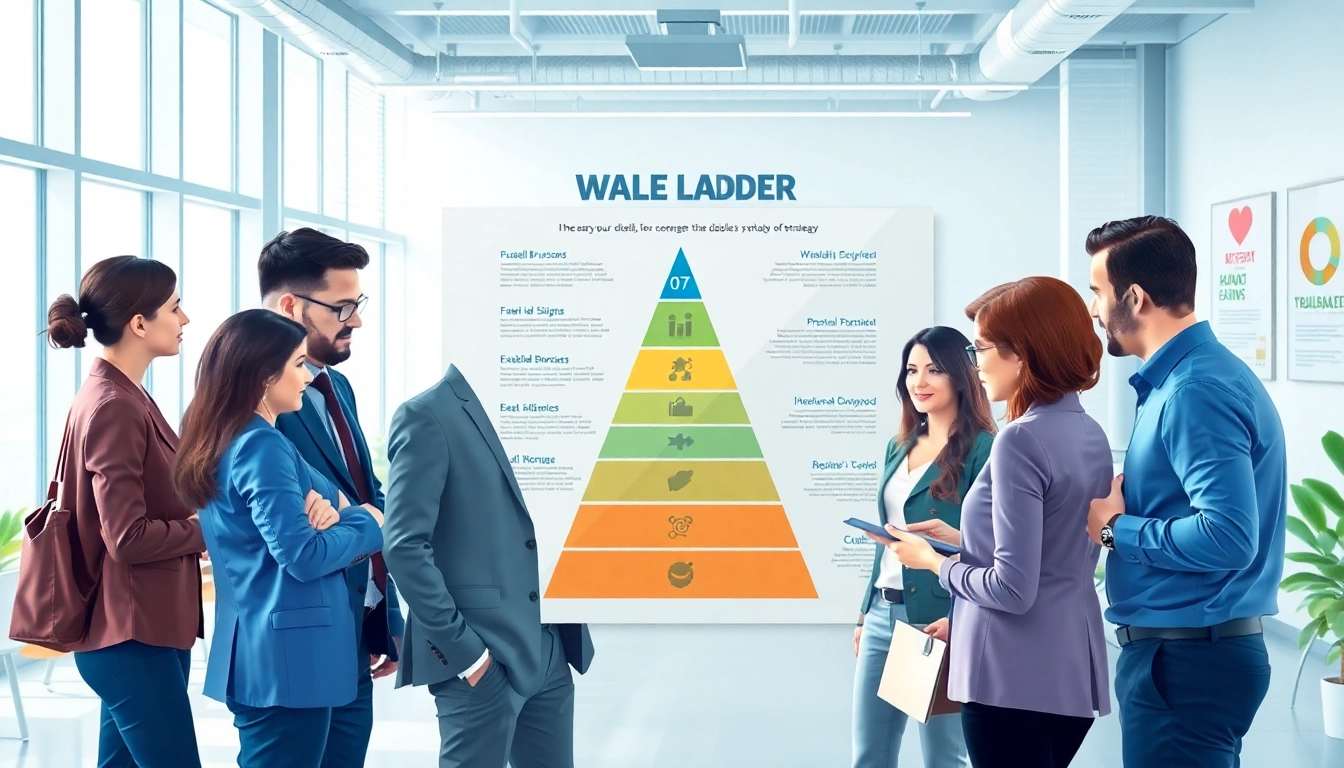Introduction to Marketing Strategy Using Russell Brunson’s Value Ladder
In the competitive landscape of digital marketing, establishing a framework that not only attracts potential customers but also fosters lasting relationships is crucial. One of the most effective methodologies that emerged from the entrepreneurial realm is the Marketing strategy using Russell Brunson’s value ladder. This innovative approach centers around offering a structured path of increasing value, enabling businesses to guide their prospects through varied offerings that build trust, engagement, and ultimately, sales conversions.
Understanding the Value Ladder Concept
The Value Ladder concept is a strategic framework proposed by Russell Brunson, designed to seamlessly navigate customers from initial exposure to becoming loyal patrons. Imagine a ladder with each rung representing a different offer or product tier—beginning with low-stake, entry-level products catering to new prospects, and scaling up to premium offerings that yield the highest revenue. This model not only elevates customer experience through tailored engagements but also strategically enhances the average customer lifetime value.
The Importance of Customer Journey Mapping
At the core of Brunson’s Value Ladder lies an acute understanding of the customer journey. Mapping this journey is vital for identifying pain points and pleasures throughout the customer lifecycle. Effective mapping enables marketers to pinpoint where prospects drop off or convert, informing adjustments in their value ladder. With keen insight into the various stages—Awareness, Interest, Decision, and Action—businesses can create custom offers aligned with their audience’s unique needs.
Key Benefits of Implementing the Value Ladder
- Increased Customer Retention: By nurturing customers through tailored offers, businesses can enhance retention rates.
- Higher Average Order Value: As customers ascend the ladder, they are likely to spend more on enhanced offerings.
- Streamlined Sales Processes: Clear, structured value propositions simplify the customer’s decision-making process.
- Data-Driven Insights: Analyzing customer interactions at each level helps refine marketing strategies and improve ROI.
Stages of Russell Brunson’s Value Ladder
Stage 1: Attracting Prospects with Low-Stake Offers
The first rung of the Value Ladder involves attracting prospects through free or low-cost offerings, often referred to as bait. These can include free trials, e-books, webinars, or discount coupons. The central idea here is to minimize risks for potential customers, allowing them to engage without the fear of commitment. This initial offer serves as the gateway to further interactions, creating valuable touchpoints that can convert curious visitors into leads.
Stage 2: Engaging Customers Through Meaningful Interactions
Once prospects are engaged with the initial offering, the next stage focuses on meaningful interactions that build relationships. This could involve personalized email marketing, exclusive webinars, or engaging social media content. The goal in this stage is to provide value, educate, and entertain, ensuring that customers are emotionally invested before presenting them with higher-value offers. Content, storytelling, and consistent communication play crucial roles in fostering this engagement.
Stage 3: Converting Leads into Loyal Customers
The final step in moving up the Value Ladder is converting leads into loyal customers. This is where high-tier offers come into play—premium products or services that provide substantial value and articulate why they are worth the investment. Here, it’s essential to clearly communicate the benefits, possibly through case studies, testimonials, or tailored marketing strategies that highlight the impact of the higher-value offerings. This stage caps the customer journey and transitions them into advocates—customers willing to share their positive experiences and recommend your business to others.
Developing Your Own Value Ladder Strategy
Analyzing Target Audience Needs and Preferences
Before constructing your value ladder, it’s crucial to analyze the preferences and pain points of your target audience. Conducting surveys, monitoring social media interactions, and leveraging analytics tools can yield insights into what your audience is looking for. Understanding demographics such as age, location, and purchasing behaviors assists in tailoring your ladder effectively. By speaking directly to their aspirations, fears, and frustrations, you can design a ladder that resonates and meets their expectations.
Creating Offers that Resonate at Each Stage
Creating compelling offers at each level of the value ladder is paramount. The first rung should offer significant perceived value without considerable financial investment. This might be in the form of exclusive content, a low-cost product, or time-limited offers. As customers ascend, each offering must provide increased value—whether through enhanced features, personalized services, or exclusive access. The clarity of these offers combined with their perceived value ensures that each stage feels like a logical progression in the customer journey.
Testing and Optimizing Your Strategy for Maximum Impact
Once your value ladder strategy is implemented, continuous testing and optimization are needed for sustained success. Utilizing A/B testing to evaluate different offers can reveal which resonate best with your audience. Monitoring metrics like engagement rates, conversion rates, and customer feedback will provide insights into your ladder’s effectiveness. Adjusting your offers based on performance will improve results and help to align with evolving customer preferences.
Case Studies of Successful Value Ladder Implementations
Business Transformations through Effective Value Ladder Strategies
Several businesses have implemented the value ladder strategy with transformative results. For instance, a small e-commerce business offering handmade products started with a low-cost product, which through customer engagement transformed into a loyal customer base capable of being upsold into higher-value items. By measuring customer feedback and purchase behaviors, they effectively crafted offers that led to significant increases in their average order value over the years.
Comparative Analysis of Industry Approaches
Across various industries, the application of the value ladder can differ significantly, providing unique insights into customer interactions. In the tech industry, for instance, companies typically offer free trials emphasizing their premium features, while service-based businesses might initially provide free consultations to build trust. By comparing these approaches, businesses can glean strategies that could be beneficial in their implementations.
Lessons Learned from Practical Applications
Several key takeaways arise from successful practical applications of the value ladder. For one, understanding the importance of trust in customer relationships is foundational. Additionally, recognizing that not every customer will ascend the ladder at the same pace emphasizes the need for personalized engagement. Regularly gathering and acting upon customer feedback remains pivotal in refining marketing strategies and product offerings.
Measuring Success and Future Trends in Value Ladder Strategies
Key Performance Indicators to Track
Establishing clear key performance indicators (KPIs) is crucial for measuring the success of your value ladder strategy. These might include metrics such as conversion rates, customer retention rates, and customer lifetime value. Each KPI helps to assess the effectiveness of individual offers and the overall impact of your value ladder on customer journeys and revenue growth. Regularly reviewing these metrics ensures you can pivot your strategy as needed effectively.
Adapting to Changes in Consumer Behavior
Adapting to shifts in consumer behavior is essential for maintaining a competitive edge. As digital consumption trends evolve, so do customer expectations regarding value and engagement. Businesses must stay agile, ready to update their ladders and offerings, reflecting changes in industry trends, technology, or societal values. Listening to your audience and incorporating their evolving needs will be instrumental in fostering lasting relationships.
Innovative Trends to Watch in Marketing Strategies
Looking ahead, several innovative trends are poised to shape the future of marketing strategies, particularly in relation to the Value Ladder framework. Trends such as the increased use of artificial intelligence for personalized marketing, programmatic advertising, and data-driven decision-making will provide new ways to fine-tune the customer journey and enhance value at each ladder stage. Additionally, focusing on sustainability and social responsibility will resonate with customers increasingly seeking alignment with brands that share their values.



